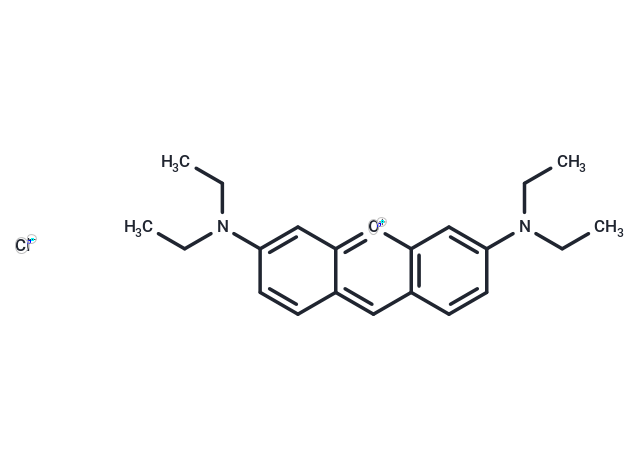Shopping Cart
Remove All Your shopping cart is currently empty
Your shopping cart is currently empty
Pyronine B (NSC 44690) is a fluorophore with low relative fluorophore brightness and a small hydrophobic (SH) protein channel inhibitor, which is used for staining of bacteria and mycobacteria and in the spectrophotometric determination of ultra-trace ruthenium.

| Pack Size | Price | USA Warehouse | Global Warehouse | Quantity |
|---|---|---|---|---|
| 500 mg | $30 | In Stock | In Stock | |
| 1 g | $45 | - | In Stock |
| Description | Pyronine B (NSC 44690) is a fluorophore with low relative fluorophore brightness and a small hydrophobic (SH) protein channel inhibitor, which is used for staining of bacteria and mycobacteria and in the spectrophotometric determination of ultra-trace ruthenium. |
| Cell Research | Instructions I. Dissolution and preparation: Pyronine B is usually provided in powder form and can be dissolved using an appropriate solvent such as dimethylsulfonamide (DMSO) or ethanol. The working concentration of Pyronine B is usually between 1 µM and 10 µM, which can be adjusted according to the specific experimental requirements. For spectrophotometric determination, Pyronine B can be diluted to the required concentration and prepared in an aqueous buffer or solvent. II. Bacterial and fungal staining: 1. Staining procedure: After preparing the working solution of Pyronine B, add it to the bacterial or fungal culture, usually using a concentration of 1-10 µM. 2. Incubate the dye with the cells for 10 to 30 minutes, and the specific time can be optimized according to the desired fluorescence intensity. 3. After staining, excess dye needs to be removed by washing. 4. Fluorescence microscopy observation: 1) Pyronine B emits fluorescence at approximately 570 nm when excited at approximately 535 nm. 2) Since the fluorescence intensity of Pyronine B is relatively low, it is suitable for use in situations where less background fluorescence is required. III. Spectrophotometric determination of ultra-trace ruthenium: 1. Reaction procedure: 1) Mix the Pyronine B solution with the ruthenium sample and adjust the pH as needed (usually in the range of 5-7 for optimal sensitivity). 2) Measure the absorbance of the solution at a specific wavelength (usually around 570 nm) to infer the concentration of ruthenium by the intensity of the complex. Notes 1. Pyronine B should be stored in a cool and dry place and avoid prolonged exposure to light to prevent photodegradation. 2. Pyronine B solution should be stored at -20°C and try to avoid repeated freezing and thawing. |
| Synonyms | NSC-44690, NSC44690, NSC 44690 |
| Molecular Weight | 358.91 |
| Formula | C21H27ClN2O |
| Cas No. | 2150-48-3 |
| Smiles | [Cl-].[O+]=1C=2C=C(C=CC2C=C3C=CC(=CC13)N(CC)CC)N(CC)CC |
| Relative Density. | no data available |
| Storage | Powder: -20°C for 3 years | In solvent: -80°C for 1 year | Shipping with blue ice/Shipping at ambient temperature. | |||||||||||||||||||||||||
| Solubility Information | DMSO: 10 mg/mL (27.86 mM), Sonication is recommended. | |||||||||||||||||||||||||
Solution Preparation Table | ||||||||||||||||||||||||||
DMSO
| ||||||||||||||||||||||||||
| Size | Quantity | Unit Price | Amount | Operation |
|---|

Copyright © 2015-2026 TargetMol Chemicals Inc. All Rights Reserved.